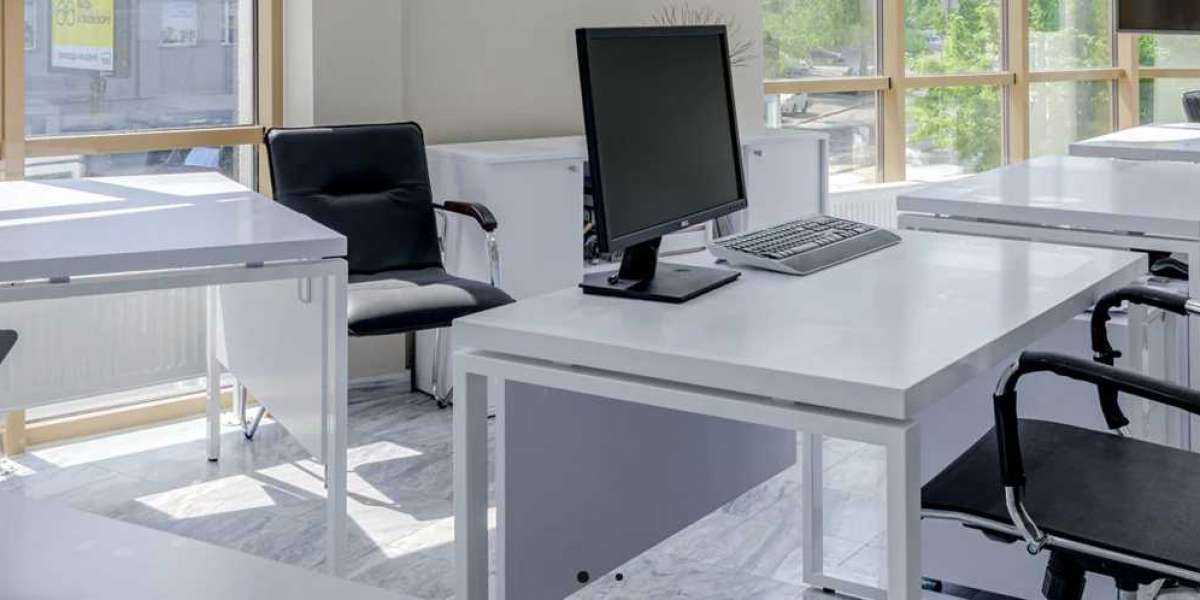Choosing the right desk can significantly impact your productivity, comfort, and overall work experience. Different work styles require different desk features, so it's essential to understand your needs before making a selection. Here’s a guide to help you select the perfect desk based on your work style:
1. Evaluate Your Work Style
Identify Key Activities:
- Sedentary Work: If you spend most of your day seated and working on a computer, you’ll need a desk that supports long hours of sitting.
- Active or Collaborative Work: If your work involves frequent movement, meetings, or collaboration, you’ll need a desk that accommodates these activities.
Consider Ergonomics:
- Posture Support: Ensure the desk height allows you to maintain a comfortable and healthy posture.
- Movement: If you prefer standing or changing positions, look for desks that offer height adjustability.
2. Desk Types and Features
1. Standard Desks:
Characteristics:
- Fixed Height: Typically designed for sitting, with a fixed height that may not suit everyone’s ergonomic needs.
- Simple Design: Often includes drawers and basic features.
Best For:
- Traditional Desk Jobs: Suitable for those who prefer a standard sitting arrangement and do not need frequent adjustments.
Examples:
- IKEA LINNMON/ADILS Desk: Affordable and functional for general office work.
- Sauder Shoal Creek Desk: Classic design with built-in storage.
2. Adjustable Desks (Standing Desks):
Characteristics:
- Height Adjustment: Allows you to switch between sitting and standing positions.
- Electric or Manual: Available in both motorized and crank-operated models.
Best For:
- Active Workers: Ideal for those who benefit from alternating between sitting and standing or those with ergonomic concerns.
Examples:
- Uplift V2 Standing Desk: Popular for its stability and adjustability.
- Vari Electric Standing Desk: Known for ease of use and smooth operation.
3. Corner Desks:
Characteristics:
- Space-Saving: Designed to fit in the corner of a room, making the most of available space.
- Extended Surface: Provides ample workspace and storage options.
Best For:
- Small Offices or Home Offices: Perfect for optimizing corner spaces and providing more working area.
Examples:
- Tribesigns Corner Desk: Features a spacious L-shaped design.
- IKEA GALANT Corner Desk: Offers modular options for customization.
4. Compact Desks:
Characteristics:
- Small Footprint: Designed for small spaces with minimalistic features.
- Portable: Often lightweight and easy to move.
Best For:
- Minimalist Workspaces: Suitable for small offices or home workstations where space is limited.
Examples:
- Origami Folding Desk: Easy to set up and store.
- AmazonBasics Compact Desk: Simple and functional for small areas.
5. Executive Desks:
Characteristics:
- High-End Design: Features a large surface area, high-quality materials, and built-in storage.
- Professional Appearance: Often used in managerial or high-level executive settings.
Best For:
- High-Profile Offices: Ideal for executives or those who need a substantial and aesthetically pleasing desk.
Examples:
- Bush Business Furniture Series C: Offers a professional look with ample storage.
- HON 10700 Series: Durable and stylish for executive use.
3. Key Desk Features
1. Storage:
Characteristics:
- Drawers: Useful for organizing office supplies and documents.
- Shelves: Provides additional storage and keeps items within reach.
Considerations:
- Built-In Storage: Integrated drawers and shelves can reduce clutter.
- Modular Options: Add-ons like filing cabinets can enhance storage capacity.
Examples:
- Office Designs L-Desk: Includes multiple drawers and compartments.
- Staples Corner Desk: Features built-in storage and shelving.
2. Cable Management:
Characteristics:
- Cable Holes: Helps keep wires organized and out of sight.
- Cable Trays: Provides space to route and hide cables.
Considerations:
- Integrated Solutions: Built-in cable management systems streamline setup.
- Accessibility: Ensure that cable management features are easy to use and maintain.
Examples:
- IKEA BEKANT Desk: Features integrated cable management.
- Fully Jarvis Desk: Includes cable management options.
3. Adjustability:
Characteristics:
- Height Adjustment: Allows for customization based on user preferences.
- Flexible Design: Adaptable to different tasks and work styles.
Considerations:
- Ease of Adjustment: Ensure that the adjustment mechanism is smooth and easy to use.
- Range of Motion: Check that the desk accommodates both sitting and standing positions comfortably.
Examples:
- FlexiSpot E7: Highly adjustable with a wide range of height settings.
- VariDesk Pro Plus: Converts from sitting to standing with ease.
4. Surface Material:
Characteristics:
- Durability: Choose materials that withstand daily use and wear.
- Finish: Opt for finishes that match your office decor and preferences.
Considerations:
- Easy to Clean: Materials like laminate or glass are easier to maintain.
- Aesthetic Appeal: Select materials that complement the overall office design.
Examples:
- Bush Furniture Cabot Desk: Features a durable laminate surface.
- Z-Line Designs Desk: Offers a sleek glass top and metal frame.
4. Additional Tips
1. Measure Your Space:
Ensure the desk fits comfortably within your workspace, allowing for easy movement and accessibility.
2. Consider Future Needs:
Think about potential future requirements, such as additional equipment or changes in work style.
3. Test for Comfort:
If possible, test the desk before purchasing to ensure it meets your ergonomic and functional needs.
4. Check for Reviews:
Read reviews and ratings from other users to gauge the desk’s performance and durability.
Conclusion
Selecting the right desk involves understanding your work style, ergonomic needs, and office space requirements. By considering factors like desk type, features, and materials, you can choose a desk that enhances your productivity, supports your work habits, and contributes to a comfortable and efficient workspace.









